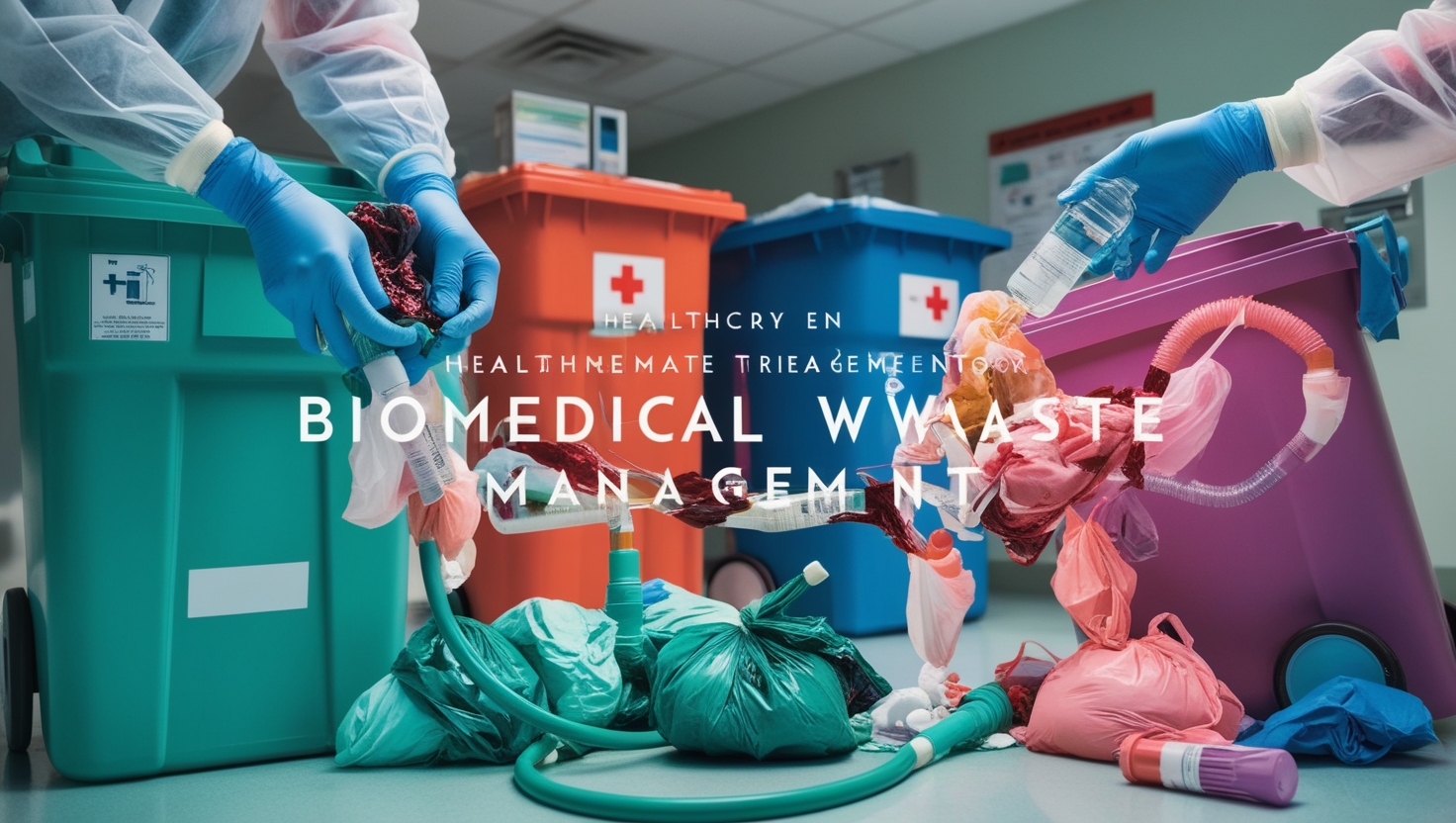Biomedical waste management is vital to ensuring the safe handling, treatment, and disposal of waste generated from medical and biological activities. Properly managing biomedical waste prevents environmental contamination, reduces infection risks, and protects public health. This blog post explores the importance of biomedical waste management, the types of waste involved, and the methods used for effective management.
What is Biomedical Waste?
Biomedical waste includes any waste generated during the diagnosis, treatment, or immunization of humans or animals and research activities related to these processes. This waste encompasses a wide range of materials, such as:
- Infectious Waste: Waste contaminated with blood, bodily fluids, or other infectious agents.
- Sharps: Needles, syringes, scalpels, and other sharp objects that can cause injury or infections.
- Pathological Waste: Human tissues, organs, body parts, and fluids.
- Chemical Waste: Discarded chemicals, disinfectants, and pharmaceuticals.
- Radioactive Waste: Waste containing radioactive materials used in medical treatments or research.
- Non-hazardous Waste: General waste from healthcare settings that does not pose a risk of infection or contamination.

The Importance of Biomedical Waste Management
This is crucial for several reasons:
- Protecting Public Health: Improper disposal of biomedical waste can spread infectious diseases among healthcare workers, waste handlers, and the public.
- Ensuring Environmental Safety: Hazardous substances in biomedical waste can contaminate soil, water, and air if not managed properly.
- Complying with Legal Requirements: Laws require healthcare facilities to follow specific guidelines for disposing of biomedical waste. Non-compliance can result in legal penalties and damage to a facility’s reputation.
- Fulfilling Community Responsibility: Proper waste management shows healthcare providers’ commitment to protecting the community and environment from potential hazards.

Biomedical Waste Management Process
This is involves several key steps to ensure safe handling from generation to final disposal.
- Segregation: Healthcare workers should separate waste at the point of generation into different categories based on its type (e.g., infectious, sharps, chemical). This practice ensures the application of the appropriate disposal method for each waste type.
- Collection and Storage: After segregation, staff collects biomedical waste in color-coded bins and containers, each designated for a specific type of waste. These containers must be leak-proof, puncture-resistant, and properly labeled to prevent accidental exposure.
- Transportation: Specially designed vehicles transport the waste to a treatment facility. Adhering to safety protocols during transportation minimizes the risk of spills or exposure.
- Treatment: Various methods treat biomedical waste, rendering it safe for disposal. Common treatment methods include:
- Autoclaving: Using steam under pressure to sterilize waste.
- Incineration: Burning waste at high temperatures to destroy pathogens and reduce waste volume.
- Microwaving: Using microwave radiation to disinfect waste.
- Chemical Treatment: Applying chemicals to neutralize hazardous waste.
- Disposal: After treatment, the facility either disposes of the waste in landfills, recycles it, or incinerates it, depending on the type of waste and the treatment method. Disposal methods must minimize environmental impact and comply with regulatory guidelines.

Challenges in Biomedical Waste Management
Despite the importance of proper BWM, healthcare facilities face several challenges:
- Lack of Awareness and Training: Inadequately trained healthcare workers and waste handlers may not follow proper waste segregation and disposal procedures.
- Resource Constraints: Some healthcare facilities, especially in developing countries, may lack the necessary infrastructure, equipment, and financial resources for effective waste management.
- Maintaining Regulatory Compliance: Healthcare facilities may find it challenging to keep up with changing regulations and ensure compliance, especially those with limited resources.
- Minimizing Waste: Reducing the volume of biomedical waste generated is crucial. Implementing waste reduction strategies, such as using reusable medical supplies and materials, requires a concerted effort.

Best Practices for Effective Biomedical Waste Management
To overcome these challenges and ensure effective biomedical waste management, healthcare facilities can adopt the following best practices:
- Training and Education: Regular training programs for healthcare workers and waste handlers on waste segregation, handling, and disposal procedures are essential.
- Infrastructure Development: Investing in proper waste management infrastructure, such as autoclaves, incinerators, and color-coded bins, is crucial for ensuring safe waste disposal.
- Regular Audits: Conducting regular audits of waste management practices can help identify areas for improvement and ensure compliance with regulations.
- Collaboration with Waste Management Companies: Partnering with specialized waste management companies can provide healthcare facilities with the expertise and resources needed to manage biomedical waste effectively.
Conclusion
Biomedical waste management is a critical aspect of healthcare that requires careful attention and adherence to best practices. By managing biomedical waste properly, healthcare facilities can protect public health, preserve the environment, and comply with legal requirements. As the healthcare industry continues to grow, the importance of effective (BWM) will only increase. It is essential for all healthcare providers to prioritize this vital aspect of their operations.

